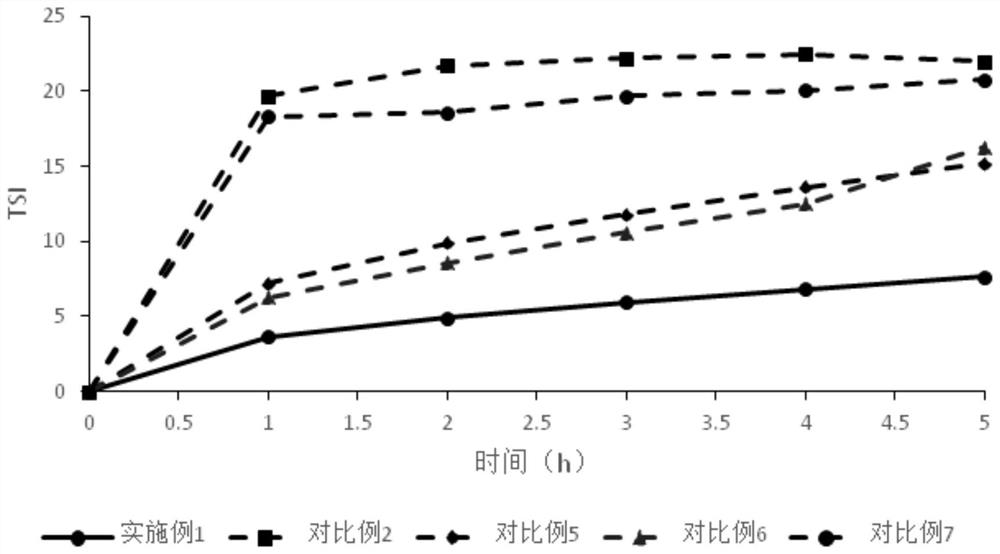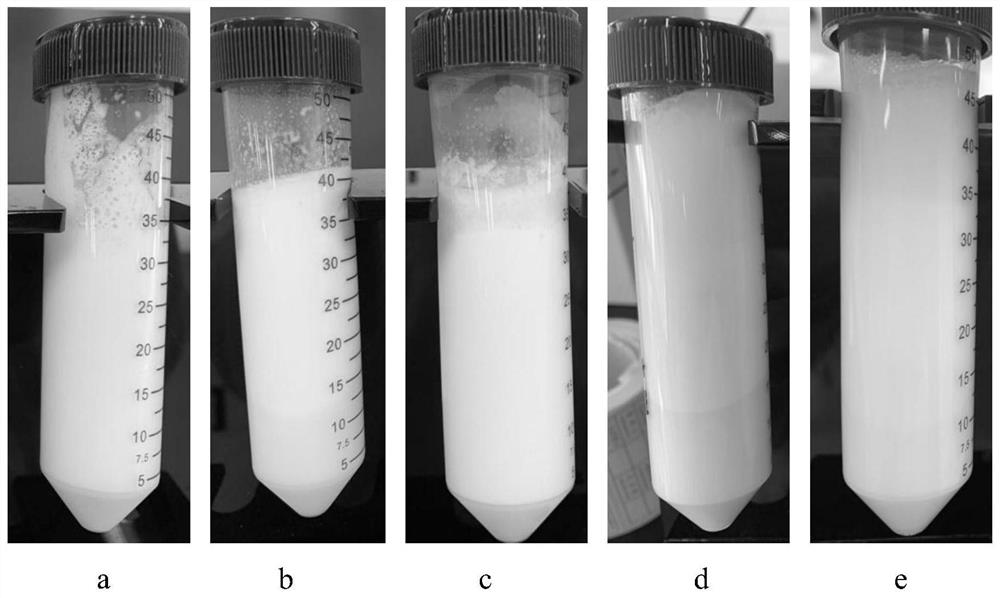High-lipid digestibility concentrated emulsion containing low-concentration vegetable phospholipids
A plant phospholipid and concentrated milk technology, applied in dairy products, milk preparations, applications, etc., can solve problems such as long gastric emptying time and slow lipid enzymatic hydrolysis rate
- Summary
- Abstract
- Description
- Claims
- Application Information
AI Technical Summary
Problems solved by technology
Method used
Image
Examples
preparation example Construction
[0133] The concentrated emulsion prepared by the present invention has the following advantages:
[0134] 1. Using innovative non-high temperature emulsion concentration technology, the concentration process will not have obvious impact on the nutrition, color and flavor of the emulsion.
[0135] 2. After special phospholipid, fat ratio and type formula design, the lipid digestion rate of the reconstituted emulsion is higher than that of traditional infant formula milk powder.
[0136] 3. The concentrated milk of the present invention is stable during the shelf life, and is less prone to problems such as flocculation, stratification, and precipitation during storage.
Embodiment 1
[0151] The formulations of the water and oil phases are shown in Table 1. Emulsion concentrates and infant formula were prepared using the following methods:
[0152] Step (1): Mix coconut oil, rice oil, OPO-55, soybean oil, monoglyceride and algal oil, and stir in a water bath at 60° C. to form an oil phase.
[0153] Step (2): mix sunflower phospholipid and water, and stir in a water bath at 60° C. for 30 minutes to form a phospholipid dispersion.
[0154] Step (3): mixing skimmed milk powder, whey protein concentrate powder, milk sphingomyelin, lactose, locust bean gum and the phospholipid dispersion of step (2), stirring for 1 hour to form an aqueous phase.
[0155] Step (4): the oil phase and the water phase are mixed, and sheared at 3000 rpm for 3 minutes to form a primary emulsion.
[0156] Step (5): Homogenize the primary emulsion at 80 bar for 3 times to obtain an emulsion.
[0157] Step (6): The emulsion is kept in a water bath at 65° C. for 30 minutes for pasteuri...
Embodiment 2
[0161] The formulations of the water and oil phases are shown in Table 1. Emulsion concentrates and infant formula were prepared using the following methods:
[0162] Step (1): mixed coconut oil, rice oil, OPO-55, soybean oil, monoglyceride and algae oil, stirred in a water bath at 60° C. to form an oil phase.
[0163] Step (2): mix sunflower phospholipid and water, and stir in a water bath at 60° C. for 30 minutes to form a phospholipid dispersion.
[0164] Step (3): mixing skimmed milk powder, whey protein concentrate powder, milk sphingomyelin, lactose, locust bean gum and the phospholipid dispersion of step (2), stirring for 1 hour to form an aqueous phase.
[0165] Step (4): the oil phase and the water phase are mixed, and sheared at 3000 rpm for 3 minutes to form a primary emulsion.
[0166] Step (5): Homogenize the primary emulsion at 80 bar for 3 times to obtain an emulsion.
[0167] Step (6): The emulsion is kept in a water bath at 65° C. for 30 minutes for pasteur...
PUM
 Login to View More
Login to View More Abstract
Description
Claims
Application Information
 Login to View More
Login to View More - R&D
- Intellectual Property
- Life Sciences
- Materials
- Tech Scout
- Unparalleled Data Quality
- Higher Quality Content
- 60% Fewer Hallucinations
Browse by: Latest US Patents, China's latest patents, Technical Efficacy Thesaurus, Application Domain, Technology Topic, Popular Technical Reports.
© 2025 PatSnap. All rights reserved.Legal|Privacy policy|Modern Slavery Act Transparency Statement|Sitemap|About US| Contact US: help@patsnap.com



